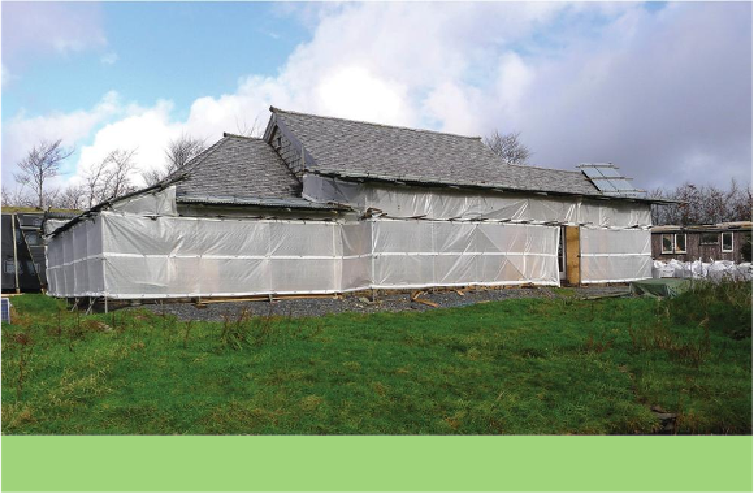Civil Engineering Reference
In-Depth Information
In severely exposed locations if casting late in the year, it is advisable to erect a screen around the
hempcrete walls to protect them from the worst of the weather while they dry.
For this reason, any sealing up and heating of the inside of the building should be organized
carefully to ensure that the moisture that leaves the wall into the warm air is then taken
out of the building through appropriate ventilation. On a very basic level, this might sens-
ibly be done by sealing and heating the building overnight when no-one is there, and when
work commences the next day, turning off the heaters and opening all doors and windows
to encourage maximum airflow through the building. Dehumidifiers can be used during
the night, while the building is sealed and heated, as long as they are used sensibly. All
water collected in the dehumidifiers during the night should be taken out of the building to
be disposed of, rather than leaving it inside to evaporate back into the internal atmosphere
as the humidity drops.
Outside, despite the lower temperature, the greater airflow from wind will have a positive
effect on drying times, although of course you are at the mercy of the weather. Don't forget
also to think about the orientation of the various elevations, and the effect this will have on
the drying time of each part of the building - either positive, through increased exposure
to sunlight and wind, or negative, through reduced sunlight or undue exposure to rain. In
extreme cases, where a wall is exposed to excessive driven rain, you may need to protect

Search WWH ::

Custom Search